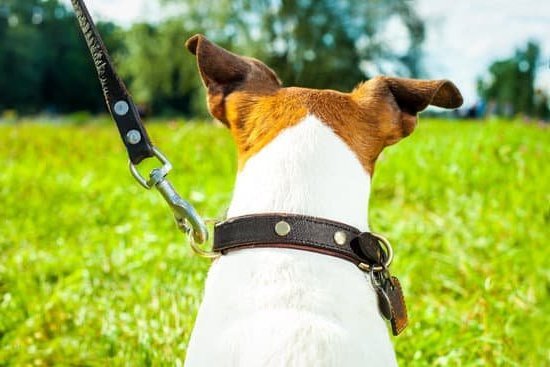Many dog owners struggle with the issue of leaving their pets alone at home, especially if their furry friends experience separation anxiety. In this article, we will explore effective methods on how to train a dog to stay alone at home. From understanding separation anxiety in dogs to using positive reinforcement techniques, we’ll provide you with comprehensive guidance on helping your dog feel comfortable and secure when left alone.
Separation anxiety is a common issue among dogs and can lead to destructive behavior, excessive barking, and overall distress for your pet. By understanding the root of this anxiety, you can better address the issue and help your dog become more comfortable with being alone at home. Creating a safe and comfortable space for your dog is essential in alleviating their anxiety and establishing a routine for alone time can also aid in building their confidence when left alone.
In addition to creating a comfortable environment for your dog, desensitization training and positive reinforcement techniques can be incredibly effective in helping them adjust to being alone at home. By addressing any behavioral issues and consistently maintaining the training process, you can help alleviate separation anxiety in your beloved pet and ensure they feel secure when left alone.
Creating a Comfortable Space for Your Dog
Understanding Your Dog’s Needs
Before you can train your dog to stay alone at home, it is important to create a comfortable space where they can feel safe and secure. Understanding your dog’s needs is crucial in providing the right environment for them. Dogs thrive in spaces where they have access to water, toys, and a comfortable bed. It’s also essential to consider their anxiety triggers, such as loud noises or being confined in small spaces.
Designating a Safe Area
Designating a specific area in your home as your dog’s safe zone can help alleviate their separation anxiety. This could be a cozy corner with their bed, toys, and water bowl, or even a crate if that is where they feel most secure. Make sure the area is free from any potential hazards and provides enough comfort for your furry friend.
Introducing Soothing Elements
To further enhance the comfort of your dog’s space, consider adding soothing elements such as calming music or pheromone diffusers. These can help create a relaxing atmosphere and reduce any stress or anxiety your dog may experience when left alone at home. Introducing these elements gradually during training can help associate the space with positive experiences for your dog.
By creating a comfortable space for your dog, you are laying the foundation for successful training on how to stay alone at home. Taking into account their needs and introducing soothing elements can make this transition easier for both you and your furry companion. Remember that patience and consistency are key as you work towards helping your dog feel more at ease when left by themselves.
Establishing a Routine for Alone Time
When training your dog to stay alone at home, establishing a routine for alone time is crucial in helping them become more comfortable with being on their own. Dogs thrive on routine and structure, so creating a consistent schedule for when they are left alone can help ease their anxiety and stress.
Here are a few tips for establishing a routine for alone time with your dog:
- Start with short periods of time: Begin by leaving your dog alone for short intervals, gradually increasing the duration as they become more comfortable. This will help prevent overwhelming them and reduce the likelihood of separation anxiety.
- Use departure cues: Implementing specific cues such as grabbing your keys or putting on your shoes before leaving can help signal to your dog that you will be leaving soon. This can reduce their anxiety by preparing them for your departure.
- Incorporate regular exercise: Ensuring that your dog gets plenty of exercise before being left alone can help tire them out and make them more likely to rest while you are away. A tired dog is often a calmer and less anxious one.
Establishing a routine for alone time also involves providing mental stimulation for your dog while you are gone. Interactive toys, puzzle feeders, or frozen treats can keep them occupied and distracted from any feelings of distress. By consistently following this routine, you can help train your dog to feel more relaxed and at ease when left alone.
Remember that every dog is unique, so it’s important to pay attention to their individual needs and adjust the routine accordingly. With patience, consistency, and a tailored approach, you can effectively train your dog to stay alone at home without experiencing excessive stress or anxiety.
Desensitization Training for Separation
Gradual Exposure to Alone Time
One effective method for training a dog to stay alone at home is through desensitization. This process involves gradually exposing your dog to being alone in small increments, allowing them to become more comfortable with the experience over time. Start by leaving your dog alone for just a few minutes and gradually increase the duration as they become more accustomed to being by themselves. This gradual exposure can help reduce their anxiety and prevent the development of separation issues.
Creating Positive Associations
During the desensitization process, it’s important to create positive associations with alone time for your dog. Before leaving, provide your dog with a special treat or toy that they only receive when you’re away. This can help them associate being alone with something enjoyable, making the experience less stressful for them. Additionally, consider leaving behind an article of clothing with your scent on it to provide comfort and reassurance while you’re away.
Utilizing Calming Techniques
Incorporating calming techniques, such as playing soothing music or using pheromone diffusers, can also aid in desensitizing your dog to being alone. These methods can help create a relaxing environment that promotes a sense of security and reduces anxiety. By gradually exposing your dog to alone time in a positive and calming manner, you can help them build confidence and comfort in staying home alone.
By implementing these desensitization techniques, you can effectively train your dog to stay alone at home and alleviate any separation anxiety they may experience. Remember that patience and consistency are key in this training process, and seeking professional help from a qualified trainer or behaviorist may be necessary for severe cases of separation anxiety.
Using Positive Reinforcement Techniques
Positive reinforcement techniques are an essential part of training a dog to stay alone at home. By using positive reinforcement, you can encourage your dog to feel more comfortable and secure when left alone. Here are some effective positive reinforcement techniques to help train your dog for solitude:
- Give rewards for good behavior: When your dog shows calm and relaxed behavior while being alone, be sure to reward them with treats or verbal praise. This will reinforce the idea that being alone is a positive experience.
- Interactive toys and puzzles: Provide your dog with interactive toys or puzzles that can keep them engaged and entertained while you are away. This can help distract them from any anxious feelings they may have about being alone.
- Gradual independence: Gradually increase the amount of time you leave your dog alone, and continue to reward them for remaining calm during these periods. This will help them learn that being alone is a normal part of their routine.
Using positive reinforcement techniques like these can make a significant difference in helping your dog feel more at ease when left alone at home. It is important to be patient and consistent in applying these methods, as every dog responds differently to training.
Remember that the goal is for your dog to associate being alone with positive experiences and feelings of security. With time and effort, you can help your furry friend overcome their separation anxiety and become more confident when staying home alone.
Addressing Any Behavioral Issues
If your dog is having a hard time staying alone at home, it’s possible that there are underlying behavioral issues that need to be addressed. Common behavioral issues related to separation anxiety in dogs include destructive behavior, excessive barking or howling, pacing, and even self-harm. These behaviors can be stressful for both the dog and the owner, but with the right approach, they can be managed effectively.
One of the first steps in addressing these behavioral issues is to identify the root cause of your dog’s anxiety. It could be triggered by past trauma, lack of socialization, fear of abandonment, or simply because they haven’t been properly trained to stay alone. Once you understand the underlying cause, you can tailor your training approach to address these specific issues and help your dog feel more comfortable when left alone.
In addition to understanding the root cause of your dog’s separation anxiety, it’s important to provide them with mental and physical stimulation to alleviate their stress. This can include interactive toys, puzzle feeders, and regular exercise to keep them mentally engaged and physically tired. By keeping your dog occupied in positive ways while you are away, you can help reduce their anxiety and prevent negative behaviors from occurring.
| Common Behavioral Issues | Solutions |
|---|---|
| Destructive behavior | Provide interactive toys and mental stimulation |
| Excessive barking or howling | Desensitization training techniques |
| Pacing and restlessness | Establish a comfortable space for the dog |
Seeking Professional Help if Necessary
While many dog owners can successfully train their pets to stay alone at home, there are some cases where professional help may be necessary. If your dog is showing severe signs of separation anxiety, such as destructive behavior, excessive barking, or self-harm, it may be time to seek the assistance of a professional dog trainer or behaviorist. These experts are specially trained to address complex behavioral issues in dogs and can provide personalized guidance for your specific situation.
A certified dog trainer or behaviorist can assess your dog’s behavior and develop a training plan tailored to their needs. They will have the knowledge and experience to identify the root cause of your dog’s separation anxiety and implement effective training techniques to help them feel more comfortable when left alone. Additionally, they can provide ongoing support and guidance as you work through the training process.
In some cases, medication may also be recommended by a veterinarian in conjunction with training to help alleviate severe separation anxiety in dogs. It’s important to consult with a qualified professional before considering this option, as they can determine if medication is necessary and prescribe the appropriate treatment plan for your dog.
| Professional Help | Necessity |
|---|---|
| Dog Trainer | For complex behavioral issues |
| Behaviorist | Personalized guidance |
| Medication | In severe cases after consulting a vet |
Maintaining Consistency and Patience in the Training Process
In conclusion, training a dog to stay alone at home requires patience, consistency, and understanding of the specific needs of your furry friend. Separation anxiety in dogs is a common issue that can be addressed through creating a comfortable space for your pet, establishing a routine for alone time, and desensitization training. Positive reinforcement techniques can also help to encourage good behavior while addressing any behavioral issues that may arise.
One of the key factors in successfully training a dog to stay alone at home is maintaining consistency in the training process. This means sticking to the routine you have established and using the same techniques each time you leave your dog alone. It’s important to remember that progress may take time, so patience is crucial. Keep in mind that every dog is different, so what works for one may not work for another.
If despite your efforts, your dog continues to exhibit signs of distress when left alone, seeking professional help from a veterinarian or animal behaviorist may be necessary. They can provide expert guidance on how to address separation anxiety and offer tailored solutions for your specific situation. Remember that with dedication and the right approach, it is possible to train a dog to stay alone at home comfortably and confidently.
Frequently Asked Questions
How Do I Train My Dog to Stay Home Alone?
Training your dog to stay home alone involves gradual desensitization. Start by leaving for short periods, then gradually increase the duration. Make sure to provide toys, treats, and a comfortable environment to help ease their anxiety.
How Long to Train a Dog to Be Left Alone?
The time it takes to train a dog to be left alone can vary depending on the individual dog’s temperament and history. Some dogs may adapt quickly within a few weeks, while others may need several months of consistent training.
Is It OK for a Dog to Be Home Alone All Day?
It is generally not ideal for a dog to be home alone all day, particularly if they are younger or have high energy levels. However, with proper training, mental stimulation, regular walks, and appropriate bathroom breaks, some dogs can handle being alone for extended periods.
Consider hiring a dog walker or using daycare services as needed to ensure your pet’s well-being.

Welcome to the blog! I am a professional dog trainer and have been working with dogs for many years. In this blog, I will be discussing various topics related to dog training, including tips, tricks, and advice. I hope you find this information helpful and informative. Thanks for reading!





